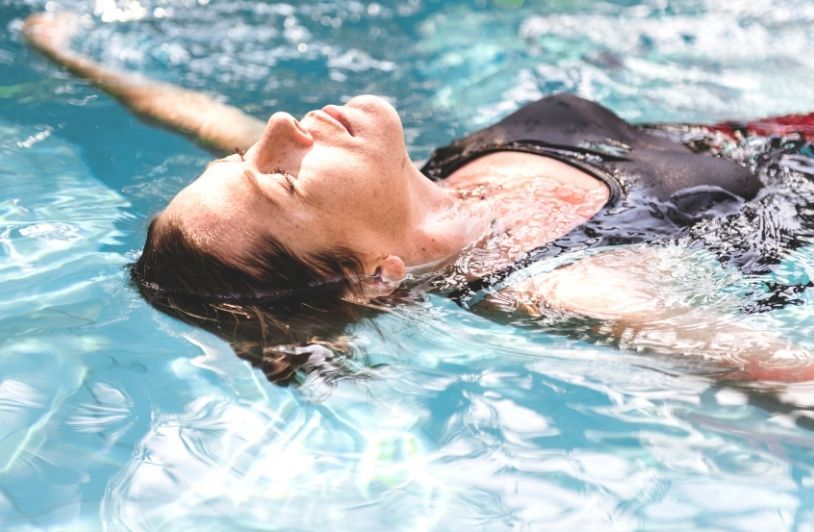Recovering from a lower-limb fracture or knee, ankle, or hip surgery, especially after a car accident, can feel daunting. Some people are juggling insurance or claims at the same time and may hear names like Elk & Elk law firm, but your rehab plan should stay center stage. Pain, stiffness, and the fear of putting weight through a healing leg often slow people down. Water changes as your body feels lighter, movement feels safer, and joints get a break while muscles still work in the pool. Pool therapy can help you start earlier and keep momentum without flaring symptoms. It also supports confidence, which matters when walking and taking the stairs feels new again.
Why Water Helps Your Healing
Buoyancy reduces the load on your joints. In waist-deep water, your legs take about 50 percent less weight. In chest-deep water, loading drops roughly 60 to 75 percent. That relief lets you practice standing, stepping, and squatting before you can tolerate those tasks on land.
Hydrostatic pressure and warmth help, too. Gentle pressure limits swelling and supports sore tissues. Warm water eases muscle guarding, so motion feels smoother. Water’s viscosity provides steady, all-direction resistance that builds strength and balance without jolts. Bottom line: earlier motion with less pain.
What a Typical Pool Session Looks Like
Most sessions last 30 to 45 minutes in water around 88 to 92°F. Your therapist sets depth based on your weight-bearing status and goals, and gives clear cues for posture and pace. Simple tools can add support or challenge: flotation belts or noodles, hand paddles, pool rails, or an underwater treadmill, where available.
A common flow:
- Warm-up: easy water walking and gentle ankle, knee, and hip range of motion
- Strength: targeted sets for hips, quads, hamstrings, and calves
- Balance: holds and stepping patterns with the rail nearby
- Conditioning: intervals on an underwater treadmill or faster walking if cleared
- Cool-down: slow walking and stretches, then a brief rest at poolside
Exercises That Support Lower-Limb Recovery
Use a depth that unloads pain but still lets you feel your leg working. Keep pain during exercise at 0-3 out of 10. Stop if sharp pain, buckling, or numbness occurs.
Try these:
- Water walking forward, backward, and sideways; look ahead, keep steps short and even.
- Heel-toe rocks at the rail to wake up ankle motion and calf control.
- Mini-squats to a comfortable depth; chest up, knees track over toes, hold the rail lightly.
- Step-ups on a submerged step; lead with the surgical side when cleared, control the lower.
- Hip abduction/adduction and calf raises; slow up, slow down, no bouncing.
- Gentle kicks, holding the wall; single-leg balance near the wall for safety.
Only enter the pool after your incision is fully closed and your surgeon has cleared you. Watch swelling the rest of the day; it should settle within a few hours. Progress by changing time, depth, or speed, or add light equipment like paddles or fins.
Safety First: Who Should Avoid and How to Prepare
Skip water therapy and talk to your care team if you have:
- Open wounds or unhealed incisions
- Active infection or fever
- Uncontrolled seizures
- Severe heart or lung disease
- Incontinence that is not managed
- Recent sutures or drains have not yet been cleared
Prepare with simple steps:
- Wear non-slip footwear and use steps or a ladder to enter slowly
- Hydrate before and after; warm pools can be dehydrating
- Bring a list of medications and surgeon or PT instructions
- Do not go alone for early sessions; have staff or a helper nearby
- Shower after to rinse chlorine and reduce skin irritation
Transitioning Back to Land
As weight bearing improves, blend pool and land sessions. Use soreness and swelling as your guide. A slight, short-lived increase is normal. A large, next-day spike means scale back.
Taper pool time while increasing land drills like step-ups, bridges, sit-to-stands, and gait training. Keep practicing balance with a counter or rail nearby. Aim for steady, weekly progress rather than big jumps. Celebrate small wins, like smoother stairs or a longer walk, because those add up.
Final Thoughts
Water can shorten downtime, protect healing tissue, and boost confidence. It works best with a plan set by your licensed physical therapist and surgeon, with clear goals that carry over to daily life. If your injury came from a car crash or unsafe property, and you have questions about coverage or claims, some people seek guidance from the Elk & Elk law firm. Stay focused on recovery, pace yourself, and keep building strength and trust in your leg.
Photo: rawpixel.com via Freepik.
CLICK HERE TO DONATE IN SUPPORT OF DCREPORT’S NONPROFIT NEWSROOM




